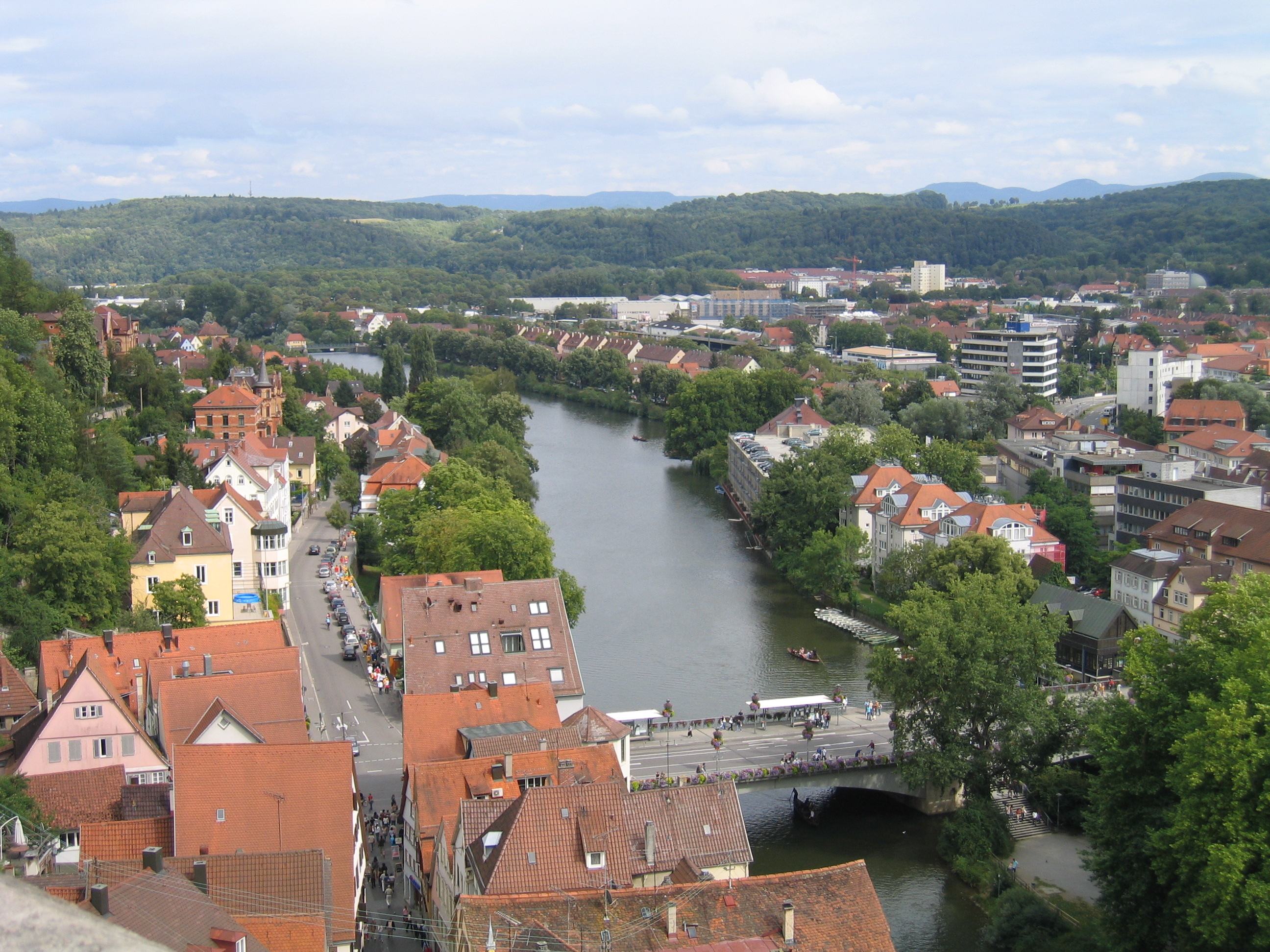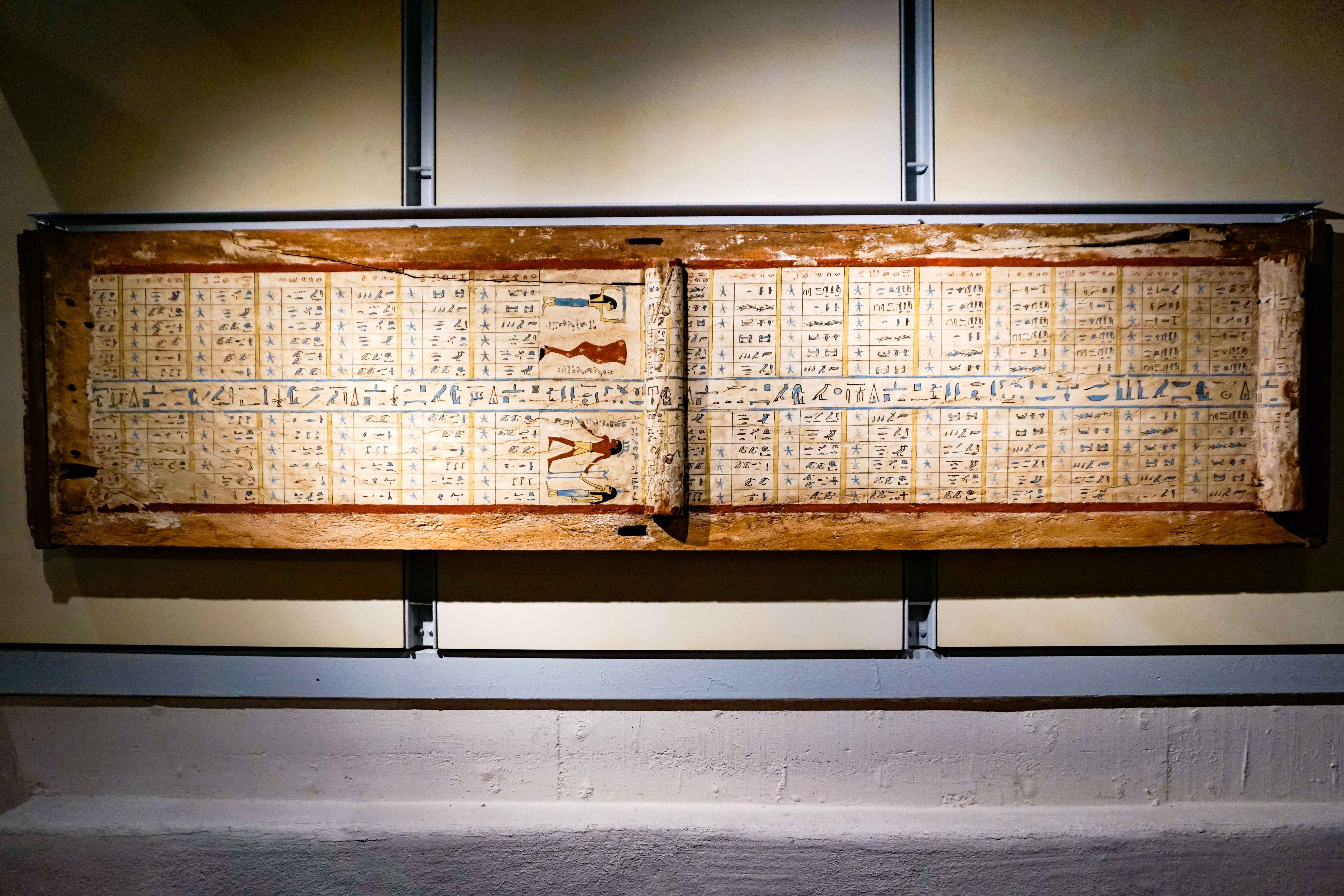|
Tübingen
Tübingen (; ) is a traditional college town, university city in central Baden-Württemberg, Germany. It is situated south of the state capital, Stuttgart, and developed on both sides of the Neckar and Ammer (Neckar), Ammer rivers. about one in three of the 90,000 people living in Tübingen is a student. As of the 2018/2019 winter semester, 27,665 students attend the University of Tübingen, Eberhard Karl University of Tübingen. The city has the lowest median age in Germany, in part due to its status as a university city. As of December 31, 2015, the average age of a citizen of Tübingen is 39.1 years. Immediately north of the city lies the Schönbuch, a densely wooded nature park. The Swabian Alb mountains rise about (beeline Tübingen City to Roßberg - 869 m) to the southeast of Tübingen. The Ammer and Steinlach rivers are Tributary, tributaries of the Neckar river, which flows in an easterly direction through the city, just south of the Middle Ages, medieval old town. La ... [...More Info...] [...Related Items...] OR: [Wikipedia] [Google] [Baidu] |
University Of Tübingen
The University of Tübingen, officially the Eberhard Karl University of Tübingen (; ), is a public research university located in the city of Tübingen, Baden-Württemberg, Germany. The University of Tübingen is one of eleven German Excellence Universities. The University of Tübingen is especially known as a centre for the study of plant biology, medicine, law, archeology, ancient cultures, philosophy, theology, religious studies, humanities, and more recently as a center of excellence for artificial intelligence. The university's noted alumni and faculty include presidents, a pope, EU Commissioners, judges of the Federal Constitutional Court, and Johannes Kepler. The university is associated with eleven List of Nobel laureates, Nobel laureates, especially in the fields of medicine and chemistry. History The University of Tübingen was founded in 1477 by Count Eberhard I, Duke of Württemberg, Eberhard V (Eberhard im Bart, 1445–1496), later the first Duke of Württemberg ... [...More Info...] [...Related Items...] OR: [Wikipedia] [Google] [Baidu] |
County Palatine Of Tübingen
The County Palatine of Tübingen was a state of the Holy Roman Empire in the medieval period. The dynasty, originally based in Nagold, managed to acquire extensive holdings over the course of their time in power, distinguishing themselves by founding a large number monasteries in their territories. By the time of the High Middle Ages, several factors contributed to their economic decline, including the expenses of keeping court and extravagant donations to the monasteries they founded. The line itself experienced fragmentation into numerous cadet branches, the longest-lasting of which were the Counts of Tübingen-Lichteneck (until 1664) and the Counts of Montfort (1787). History The oldest documented count of Nagold is Anselm of Nagoldgau the Elder, who is as recorded as possessing Kuppingen (modern Herrenberg-Kuppingen) in the year 966. He is followed by Anselm of Nagoldgau the Younger, who is mentioned in records from 1027 and 1048. Between these two (the only two counts ... [...More Info...] [...Related Items...] OR: [Wikipedia] [Google] [Baidu] |
Neckar
The Neckar () is a river in Germany, mainly flowing through the southwestern States of Germany, state of Baden-Württemberg, with a short section through Hesse. The Neckar is a major right tributary of the Rhine. Rising in the Schwarzwald-Baar-Kreis near Villingen-Schwenningen, Schwenningen in the ''Schwenninger Moos'' conservation area at a height of above sea level, it passes through Rottweil, Rottenburg am Neckar, Kilchberg (Tübingen), Kilchberg, Tübingen, Wernau, Nürtingen, Plochingen, Esslingen am Neckar, Esslingen, Stuttgart, Ludwigsburg, Marbach am Neckar, Marbach, Heilbronn and Heidelberg, before discharging on average of water into the Rhine at Mannheim, at above sea level, making the Neckar its 4th largest tributary, and the 10th largest river in Germany. Since 1968, the Neckar has been navigable for cargo ships via 27 locks for about upstream from Mannheim to the river port of Plochingen, at the confluence with the Fils (river), Fils. From Plochingen to Stuttg ... [...More Info...] [...Related Items...] OR: [Wikipedia] [Google] [Baidu] |
Boris Palmer
Boris Erasmus Palmer (born 28 May 1972) is a German politician and former member of the Alliance '90/The Greens, Green Party. He has been mayor of Tübingen since January 2007. From March 2001 to May 2007, he was a member of the Landtag of Baden-Württemberg, Baden-Württemberg Landtag, the State parliament in Stuttgart. Palmer's controversial positions have cost him the support of his party in the 2020 municipal elections, and a process to oust him from party ranks was started the following year. Background Palmer was born in Waiblingen, Baden-Württemberg. His father, Helmut, dubbed ''Remstalrebell'' ("Rems (river), Rems-valley rebel") was a very well known and controversial figure and perennial candidate. In a ''Deutsche Welle'' interview for the program ''Talking Germany'' with Peter Craven, Palmer described his father as a rebel who became a political activist in the 1950s, when "all the old fascists, all the old Nazis were back" in power, and said that his grandfather ... [...More Info...] [...Related Items...] OR: [Wikipedia] [Google] [Baidu] |
Ammer (Neckar)
The Ammer () is a small river in Baden-Württemberg, Germany, a tributary of the Neckar. It has its source southwest of Herrenberg. Along the southern edge of the Schönbuch, it flows through Herrenberg, Ammerbuch, Unterjesingen and Tübingen, before it discharges into the Neckar at Tübingen-Lustnau after . Geography Course Origin of the Ammer are Ammer springs in the upper valley five spring pots southwest of Herrenberg in the district of Böblingen. From there the Ammer flows through the valley named after it at the southern edge of the Schönbuch nature park as well as the communities Gültstein and Ammerbuch, uniting in Tübingen with the Goldersbach and flows a little later in the Tübingen district Lustnau from the left into the upper Neckar. On its way of 22,5 km the Ammer falls about 94 meters. The Ammer river crosses the villages Gültstein (Herrenberg), Altingen, Reusten, Poltringen, Pfäffingen (all Ammerbuch), Unterjesingen (Tübingen), the hamlet ... [...More Info...] [...Related Items...] OR: [Wikipedia] [Google] [Baidu] |
Baden-Württemberg
Baden-Württemberg ( ; ), commonly shortened to BW or BaWü, is a states of Germany, German state () in Southwest Germany, east of the Rhine, which forms the southern part of Germany's western border with France. With more than 11.07 million inhabitants across a total area of nearly , it is the third-largest German state by both List of German states by area, area (behind Bavaria and Lower Saxony) and List of German states by population, population (behind North Rhine-Westphalia and Bavaria). The List of cities in Baden-Württemberg by population, largest city in Baden-Württemberg is the state capital of Stuttgart, followed by Mannheim and Karlsruhe. Other major cities are Freiburg im Breisgau, Heidelberg, Heilbronn, Konstanz, Pforzheim, Reutlingen, Tübingen, and Ulm. Modern Baden-Württemberg includes the historical territories of Baden, Prussian Province of Hohenzollern, Hohenzollern, and Württemberg. Baden-Württemberg became a state of West Germany in April 1952 through ... [...More Info...] [...Related Items...] OR: [Wikipedia] [Google] [Baidu] |
Schönbuch
Schönbuch (; ) is an almost completely wooded area southwest of Stuttgart and part of the Southern German Escarpment Landscape (German language, German: ''südwestdeutsches Schichtstufenland''). In 1972, the central zone of Schönbuch became the first nature park in Baden-Württemberg. The borders of the Schönbuch-Region are vague; however, the area of the Nature Park itself is strictly defined and is discernible from the adjacent areas. In the south, west, and east, the borders of the Nature Park and Schönbuch-Region are roughly the same; however, the region’s boundaries also include the cities and communities which lie on its edges. The southern border is defined by the Ammer and Neckar river valleys. The western boundary is generally accepted to lie within the Gäu flats, beginning east of the Filder Plateau. The features making up the northern edge of the region are the Siebenmühlental (Seven-Mill Valley), a clearing in the forest referred to as the “Schönbuchlichtu ... [...More Info...] [...Related Items...] OR: [Wikipedia] [Google] [Baidu] |
Steinlach
The Steinlach is a river with a length of in Baden-Württemberg, Germany. It is a tributary to the Neckar. It has its source in the ''Eckenbachgraben'', a gap in the Swabian Alb mountain range. The source is on the territory of the town of Mössingen, on an elevation of above sea level. The Steinlach flows into a northerly direction. After taking up several streams outside of Mössingen, it flows through Ofterdingen, Nehren and Dußlingen to Tübingen, where it discharges into the Neckar. Geography History The Steinlach has its source east of Mössinger District Talheim and west of Ruchberges at about 710 meters above sea Level in a northeastern side valley of the ''Eckenbachgraben'', a gorge between five and ten meters deep below the Traufkante of the Swabian Alb. The source outlet of the somewhat longer left upper reaches from the Eckenbachgraben shifts with the karst water level of the Swabian Alb. The sources of both branches are just still located in the munici ... [...More Info...] [...Related Items...] OR: [Wikipedia] [Google] [Baidu] |
Bebenhausen
Bebenhausen () is a village (pop. 347) in the Tübingen district, Baden-Württemberg, Germany. Since 1974 it is a district of the city of Tübingen, its least populous one. It is located 3 km north of Tübingen proper (about 5 km northeast of the city centre), in the southeastern part of the protected landscape of the Schönbuch, a dense forest. Bebenhausen is famous for its monastery, Bebenhausen Abbey, founded in 1183 by Count Palatine Rudolph of Tübingen. In the early 19th century the monastery became a hunting palace for the kings of Württemberg. King William II of Württemberg lived there until his death in 1921, his wife Princess Charlotte of Schaumburg-Lippe until her death in 1946. It became the seat of Württemberg-Hohenzollern Württemberg-Hohenzollern was a West Germany, West German state created in 1945 as part of the French Allied Occupation Zones in Germany, post-World War II occupation zone. Its capital was Tübingen. In 1952, it was merged into the newly fo ... [...More Info...] [...Related Items...] OR: [Wikipedia] [Google] [Baidu] |
Stuttgart
Stuttgart (; ; Swabian German, Swabian: ; Alemannic German, Alemannic: ; Italian language, Italian: ; ) is the capital city, capital and List of cities in Baden-Württemberg by population, largest city of the States of Germany, German state of Baden-Württemberg. It is located on the Neckar river in a fertile valley known as the ''Stuttgarter Kessel'' (Stuttgart Cauldron) and lies an hour from the Swabian Jura and the Black Forest. Stuttgart has a population of 632,865 as of 2022, making it the list of cities in Germany by population, sixth largest city in Germany, while over 2.8 million people live in the city's administrative region and nearly 5.5 million people in Stuttgart Metropolitan Region, its metropolitan area, making it the metropolitan regions in Germany, fourth largest metropolitan area in Germany. The city and metropolitan area are consistently ranked among the List of EU metropolitan regions by GDP#2021 ranking of top four German metropolitan regions, top 5 Europea ... [...More Info...] [...Related Items...] OR: [Wikipedia] [Google] [Baidu] |
Count Palatine
A count palatine (Latin ''comes palatinus''), also count of the palace or palsgrave (from German ''Pfalzgraf''), was originally an official attached to a royal or imperial palace or household and later a nobleman of a rank above that of an ordinary count. The title originated in the Late Roman Empire. In the Middle Ages especially and into modern times, it is associated with the Holy Roman Empire,"palatine, adj.1 and n.1". OED Online. June 2019. Oxford University Press. https://www.oed.com/view/Entry/136245?redirectedFrom=count+palatine& (accessed July 31, 2019). especially Electoral Palatinate. The office, jurisdiction or territory of a count palatine was a county palatine or palatinate. In England the forms earl palatine and palatine earldom are rare alternative terms. Importance of a count palatine in medieval Europe ''Comes palatinus'' This Latin title is the original, but is also pre-feudal: it originated as Roman ''comes'', which was a non-hereditary court title of ... [...More Info...] [...Related Items...] OR: [Wikipedia] [Google] [Baidu] |
Spitzberg (Tübingen)
Spitzberg (Tübingen) is a mountain of Baden-Württemberg, Germany. It is located within the city of Tübingen Tübingen (; ) is a traditional college town, university city in central Baden-Württemberg, Germany. It is situated south of the state capital, Stuttgart, and developed on both sides of the Neckar and Ammer (Neckar), Ammer rivers. about one in .... See also * List of hills of the Schönbuch Mountains and hills of Baden-Württemberg {{BadenWürttemberg-geo-stub ... [...More Info...] [...Related Items...] OR: [Wikipedia] [Google] [Baidu] |






